Foreword
1Scope
2References
3Definitions and abbreviations
3.1Definitions
3.2Abbreviations
4Architecture model and concepts
4.1General concepts
4.2Architecture reference model
4.2.1General
4.2.2Network Functions and entities
4.2.3Non-roaming reference architecture
4.2.4Roaming reference architectures
4.2.5Data Storage architectures
4.2.5aRadio Capabilities Signalling optimisation
4.2.6Service-based interfaces
4.2.7Reference points
4.2.8Support of non-3GPP access
4.2.8.0General
4.2.8.1General Concepts to Support Trusted and Un
4.2.8.1AGeneral Concepts to support Wireline Acce
4.2.8.2Architecture Reference Model for Trusted a
4.2.8.2.1Non-roaming Architecture
4.2.8.2.2LBO Roaming Architecture
4.2.8.2.3Home-routed Roaming Architecture
4.2.8.3Reference Points for Non-3GPP Access
4.2.8.3.1Overview
4.2.8.3.2Requirements on Ta
4.2.8.4Architecture Reference Model for Wireline
4.2.8.5Access to 5GC from devices that do not sup
4.2.8.5.1General
4.2.8.5.2Reference Architecture
4.2.8.5.3Network Functions
4.2.8.5.4Reference Points
4.2.9Network Analytics architecture
4.2.10Architecture Reference Model for ATSSS Supp
4.3Interworking with EPC
4.3.1Non-roaming architecture
4.3.2Roaming architecture
4.3.3Interworking between 5GC via non-3GPP access
4.3.3.1Non-roaming architecture
4.3.3.2Roaming architecture
4.3.4Interworking between ePDG connected to EPC a
4.3.4.1Non-roaming architecture
4.3.4.2Roaming architectures
4.3.5Service Exposure in Interworking Scenarios
4.3.5.1Non-roaming architecture
4.3.5.2Roaming architectures
4.4Specific services
4.4.1Public Warning System
4.4.2SMS over NAS
4.4.2.1Architecture to support SMS over NAS
4.4.2.2Reference point to support SMS over NAS
4.4.2.3Service based interface to support SMS ove
4.4.3IMS support
4.4.4Location services
4.4.4.1Architecture to support Location Services
4.4.4.2Reference point to support Location Servic
4.4.4.3Service Based Interfaces to support Locati
4.4.5Application Triggering Services
4.4.65G LAN-type Services
4.4.6.1User plane architecture to support 5G LAN-
4.4.6.2Reference points to support 5G LAN-type se
4.4.7MSISDN-less MO SMS Service
4.4.8Time Sensitive Communication
4.4.8.1General
4.4.8.2Architecture to support Time Sensitive Com
5High level features
5.1General
5.2Network Access Control
5.2.1General
5.2.2Network selection
5.2.3Identification and authentication
5.2.4Authorisation
5.2.5Access control and barring
5.2.6Policy control
5.2.7Lawful Interception
5.3Registration and Connection Management
5.3.1General
5.3.2Registration Management
5.3.2.1General
5.3.2.25GS Registration Management states
5.3.2.2.1General
5.3.2.2.2RM-DEREGISTERED state
5.3.2.2.3RM-REGISTERED state
5.3.2.2.45GS Registration Management State models
5.3.2.3Registration Area management
5.3.2.4Support of a UE registered over both 3GPP
5.3.3Connection Management
5.3.3.1General
5.3.3.25GS Connection Management states
5.3.3.2.1General
5.3.3.2.2CM-IDLE state
5.3.3.2.3CM-CONNECTED state
5.3.3.2.45GS Connection Management State models
5.3.3.2.5CM-CONNECTED with RRC Inactive state
5.3.3.3NAS signalling connection management
5.3.3.3.1General
5.3.3.3.2NAS signalling connection establishment
5.3.3.3.3NAS signalling connection Release
5.3.3.4Support of a UE connected over both 3GPP a
5.3.4UE Mobility
5.3.4.1Mobility Restrictions
5.3.4.1.1General
5.3.4.1.2Management of Service Area Restrictions
5.3.4.2Mobility Pattern
5.3.4.3Radio Resource Management functions
5.3.4.4UE mobility event notification
5.43GPP access specific aspects
5.4.1UE reachability in CM-IDLE
5.4.1.1General
5.4.1.2UE reachability allowing mobile terminated
5.4.1.3Mobile Initiated Connection Only (MICO) mo
5.4.2UE reachability in CM-CONNECTED
5.4.3Paging strategy handling
5.4.3.1General
5.4.3.2Paging Policy Differentiation
5.4.3.3Paging Priority
5.4.4UE Radio Capability handling
5.4.4.1UE radio capability information storage in
5.4.4.1aUE radio capability signalling optimisati
5.4.4.2Void
5.4.4.2aUE Radio Capability Match Request
5.4.4.3Paging assistance information
5.4.4aUE MM Core Network Capability handling
5.4.4bUE 5GSM Core Network Capability handling
5.4.5DRX (Discontinuous Reception) framework
5.4.6Core Network assistance information for RAN
5.4.6.1General
5.4.6.2Core Network assisted RAN parameters tunin
5.4.6.3Core Network assisted RAN paging informati
5.4.7NG-RAN location reporting
5.4.8Support for identification and restriction o
5.4.9Wake Up Signal Assistance
5.5Non-3GPP access specific aspects
5.5.0General
5.5.1Registration Management
5.5.2Connection Management
5.5.3UE Reachability
5.5.3.1UE reachability in CM-IDLE
5.5.3.2UE reachability in CM-CONNECTED
5.6Session Management
5.6.1Overview
5.6.2Interaction between AMF and SMF
5.6.3Roaming
5.6.4Single PDU Session with multiple PDU Session
5.6.4.1General
5.6.4.2Usage of an UL Classifier for a PDU Sessio
5.6.4.3Usage of IPv6 multi-homing for a PDU Sessi
5.6.5Support for Local Area Data Network
5.6.6Secondary authentication/authorization by a
5.6.7Application Function influence on traffic ro
5.6.7.1General
5.6.7.2Enhancement of UP path management based on
5.6.8Selective activation and deactivation of UP
5.6.9Session and Service Continuity
5.6.9.1General
5.6.9.2SSC mode
5.6.9.2.1SSC Mode 1
5.6.9.2.2SSC Mode 2
5.6.9.2.3SSC Mode 3
5.6.9.3SSC mode selection
5.6.10Specific aspects of different PDU Session t
5.6.10.1Support of IP PDU Session type
5.6.10.2Support of Ethernet PDU Session type
5.6.10.3Support of Unstructured PDU Session type
5.6.10.4Maximum Transfer Unit size considerations
5.6.11UE presence in Area of Interest reporting u
5.6.12Use of Network Instance
5.6.13Always-on PDU session
5.6.14Support of Framed Routing
5.7QoS model
5.7.1General Overview
5.7.1.1QoS Flow
5.7.1.2QoS Profile
5.7.1.2aAlternative QoS Profile
5.7.1.3Control of QoS Flows
5.7.1.4QoS Rules
5.7.1.5QoS Flow mapping
5.7.1.6DL traffic
5.7.1.7UL Traffic
5.7.1.8AMBR/MFBR enforcement and rate limitation
5.7.1.9Precedence Value
5.7.25G QoS Parameters
5.7.2.15QI
5.7.2.2ARP
5.7.2.3RQA
5.7.2.4Notification control
5.7.2.4.1General
5.7.2.4.1aNotification Control without Alternativ
5.7.2.4.1bNotification control with Alternative Q
5.7.2.4.2Usage of Notification control with Alter
5.7.2.5Flow Bit Rates
5.7.2.6Aggregate Bit Rates
5.7.2.7Default values
5.7.2.8Maximum Packet Loss Rate
5.7.2.9Wireline access network specific 5G QoS pa
5.7.35G QoS characteristics
5.7.3.1General
5.7.3.2Resource Type
5.7.3.3Priority Level
5.7.3.4Packet Delay Budget
5.7.3.5Packet Error Rate
5.7.3.6Averaging Window
5.7.3.7Maximum Data Burst Volume
5.7.4Standardized 5QI to QoS characteristics mapp
5.7.5Reflective QoS
5.7.5.1General
5.7.5.2UE Derived QoS Rule
5.7.5.3Reflective QoS Control
5.7.6Packet Filter Set
5.7.6.1General
5.7.6.2IP Packet Filter Set
5.7.6.3Ethernet Packet Filter Set
5.8User Plane Management
5.8.1General
5.8.2Functional Description
5.8.2.1General
5.8.2.2UE IP Address Management
5.8.2.2.1General
5.8.2.2.2Routing rules configuration
5.8.2.2.3The procedure of Stateless IPv6 Address
5.8.2.3Management of CN Tunnel Info
5.8.2.3.1General
5.8.2.3.2Void
5.8.2.3.3Management of CN Tunnel Info in the UPF
5.8.2.4Traffic Detection
5.8.2.4.1General
5.8.2.4.2Traffic Detection Information
5.8.2.5Control of User Plane Forwarding
5.8.2.5.1General
5.8.2.5.2Data forwarding between the SMF and UPF
5.8.2.5.3Support of Ethernet PDU Session type
5.8.2.6Charging and Usage Monitoring Handling
5.8.2.6.1General
5.8.2.6.2Activation of Usage Reporting in UPF
5.8.2.6.3Reporting of Usage Information towards S
5.8.2.7PDU Session and QoS Flow Policing
5.8.2.8PCC Related Functions
5.8.2.8.1Activation/Deactivation of predefined PC
5.8.2.8.2Enforcement of Dynamic PCC Rules
5.8.2.8.3Redirection
5.8.2.8.4Support of PFD Management
5.8.2.9Functionality of Sending of "End marker"
5.8.2.9.0Introduction
5.8.2.9.1UPF Constructing the "End marker" Packet
5.8.2.9.2SMF Constructing the "End marker" Packet
5.8.2.10UP Tunnel Management
5.8.2.11Parameters for N4 session management
5.8.2.11.1General
5.8.2.11.2N4 Session Context
5.8.2.11.3Packet Detection Rule
5.8.2.11.4QoS Enforcement Rule
5.8.2.11.5Usage Reporting Rule
5.8.2.11.6Forwarding Action Rule
5.8.2.11.7Usage Report generated by UPF
5.8.2.11.8Multi-Access Rule
5.8.2.11.9Bridge Management Information
5.8.2.11.10Port Management Information Container
5.8.2.11.11Session Reporting Rule
5.8.2.11.12Session reporting generated by UPF
5.8.2.12Reporting of the UE MAC addresses used in
5.8.2.13Support for 5G VN group communication
5.8.2.13.0General
5.8.2.13.1Support for unicast traffic forwarding
5.8.2.13.2Support for unicast traffic forwarding
5.8.2.13.3Support for user plane traffic replicat
5.8.2.14Inter PLMN User Plane Security functional
5.8.3Explicit Buffer Management
5.8.3.1General
5.8.3.2Buffering at UPF
5.8.3.3Buffering at SMF
5.8.4SMF Pause of Charging
5.9Identifiers
5.9.1General
5.9.2Subscription Permanent Identifier
5.9.2aSubscription Concealed Identifier
5.9.3Permanent Equipment Identifier
5.9.45G Globally Unique Temporary Identifier
5.9.5AMF Name
5.9.6Data Network Name (DNN)
5.9.7Internal-Group Identifier
5.9.8Generic Public Subscription Identifier
5.9.9AMF UE NGAP ID
5.9.10UE Radio Capability ID
5.10Security aspects
5.10.1General
5.10.2Security Model for non-3GPP access
5.10.2.1Signalling Security
5.10.3PDU Session User Plane Security
5.11Support for Dual Connectivity, Multi-Connecti
5.11.1Support for Dual Connectivity
5.12Charging
5.12.1General
5.12.2Usage Data Reporting for Secondary RAT
5.12.3Secondary RAT Periodic Usage Data Reporting
5.13Support for Edge Computing
5.14Policy Control
5.15Network slicing
5.15.1General
5.15.2Identification and selection of a Network S
5.15.2.1General
5.15.2.2Standardised SST values
5.15.3Subscription aspects
5.15.4UE NSSAI configuration and NSSAI storage as
5.15.4.1General
5.15.4.1.1UE Network Slice configuration
5.15.4.1.2Mapping of S-NSSAIs values in the Allow
5.15.4.2Update of UE Network Slice configuration
5.15.5Detailed Operation Overview
5.15.5.1General
5.15.5.2Selection of a Serving AMF supporting the
5.15.5.2.1Registration to a set of Network Slices
5.15.5.2.2Modification of the Set of Network Slic
5.15.5.2.3AMF Re-allocation due to Network Slice(
5.15.5.3Establishing a PDU Session in a Network S
5.15.6Network Slicing Support for Roaming
5.15.7Network slicing and Interworking with EPS
5.15.7.1General
5.15.7.2Idle mode aspects
5.15.7.3Connected mode aspects
5.15.8Configuration of Network Slice availability
5.15.9Operator-controlled inclusion of NSSAI in A
5.15.10Network Slice-Specific Authentication and
5.16Support for specific services
5.16.1Public Warning System
5.16.2SMS over NAS
5.16.2.1General
5.16.2.2SMS over NAS transport
5.16.3IMS support
5.16.3.1General
5.16.3.2IMS voice over PS Session Supported Indic
5.16.3.2aIMS voice over PS Session Supported Indi
5.16.3.3Homogeneous support for IMS voice over PS
5.16.3.4P-CSCF address delivery
5.16.3.5Domain selection for UE originating sessi
5.16.3.6Terminating domain selection for IMS voic
5.16.3.7UE's usage setting
5.16.3.8Domain and Access Selection for UE origin
5.16.3.8.1UE originating SMS for IMS Capable UEs
5.16.3.8.2Access Selection for SMS over NAS
5.16.3.9SMF support for P-CSCF restoration proced
5.16.3.10IMS Voice Service via EPS Fallback or RA
5.16.3.11P-CSCF discovery and selection
5.16.3.12HSS discovery and selection
5.16.4Emergency Services
5.16.4.1Introduction
5.16.4.2Architecture Reference Model for Emergenc
5.16.4.3Mobility Restrictions and Access Restrict
5.16.4.4Reachability Management
5.16.4.5SMF and UPF selection function for Emerge
5.16.4.6QoS for Emergency Services
5.16.4.7PCC for Emergency Services
5.16.4.8IP Address Allocation
5.16.4.9Handling of PDU Sessions for Emergency Se
5.16.4.9aHandling of PDU Sessions for normal serv
5.16.4.10Support of eCall Only Mode
5.16.4.11Emergency Services Fallback
5.16.5Multimedia Priority Services
5.16.6Mission Critical Services
5.17Interworking and Migration
5.17.1Support for Migration from EPC to 5GC
5.17.1.1General
5.17.1.2User Plane management to support interwor
5.17.2Interworking with EPC
5.17.2.1General
5.17.2.2Interworking Procedures with N26 interfac
5.17.2.2.1General
5.17.2.2.2Mobility for UEs in single-registration
5.17.2.3Interworking Procedures without N26 inter
5.17.2.3.1General
5.17.2.3.2Mobility for UEs in single-registration
5.17.2.3.3Mobility for UEs in dual-registration m
5.17.2.3.4Redirection for UEs in connected state
5.17.2.4Mobility between 5GS and GERAN/UTRAN
5.17.3Interworking with EPC in presence of Non-3G
5.17.4Network sharing support and interworking be
5.17.5Service Exposure in Interworking Scenarios
5.17.5.1General
5.17.5.2Support of interworking for Monitoring Ev
5.17.5.2.1Interworking with N26 interface
5.17.5.2.2Interworking without N26 interface
5.17.5.3Availability or expected level of a servi
5.17.6Void
5.17.7Configuration Transfer Procedure between NG
5.17.7.1Architecture Principles for Configuration
5.17.7.2Addressing, routing and relaying
5.17.7.2.1Addressing
5.17.7.2.2Routing
5.17.7.2.3Relaying
5.18Network Sharing
5.18.1General concepts
5.18.2Broadcast system information for network sh
5.18.2aPLMN list handling for network sharing
5.18.3Network selection by the UE
5.18.4Network selection by the network
5.18.5Network Sharing and Network Slicing
5.19Control Plane Load Control, Congestion and Ov
5.19.1General
5.19.2TNLA Load Balancing and TNLA Load Re-Balanc
5.19.3AMF Load Balancing
5.19.4AMF Load Re-Balancing
5.19.5AMF Control Of Overload
5.19.5.1General
5.19.5.2AMF Overload Control
5.19.6SMF Overload Control
5.19.7NAS level congestion control
5.19.7.1General
5.19.7.2General NAS level congestion control
5.19.7.3DNN based congestion control
5.19.7.4S-NSSAI based congestion control
5.19.7.5Group specific NAS level congestion contr
5.19.7.6Control Plane data specific NAS level con
5.20External Exposure of Network Capability
5.20aData Collection from an AF
5.21Architectural support for virtualized deploym
5.21.0General
5.21.1Architectural support for N2
5.21.1.1TNL associations
5.21.1.2NGAP UE-TNLA-binding
5.21.1.3N2 TNL association selection
5.21.2AMF Management
5.21.2.1AMF Addition/Update
5.21.2.2AMF planned removal procedure
5.21.2.2.1AMF planned removal procedure with UDSF
5.21.2.2.2AMF planned removal procedure without U
5.21.2.3Procedure for AMF Auto-recovery
5.21.3Network Reliability support with Sets
5.21.3.1General
5.21.3.2NF Set and NF Service Set
5.21.3.3Reliability of NF instances within the sa
5.21.3.4Reliability of NF Services
5.21.4Network Function/NF Service Context Transfe
5.21.4.1General
5.22System Enablers for priority mechanism
5.22.1General
5.22.2Subscription-related Priority Mechanisms
5.22.3Invocation-related Priority Mechanisms
5.22.4QoS Mechanisms applied to established QoS F
5.23Supporting for Asynchronous Type Communicatio
5.243GPP PS Data Off
5.25Support of OAM Features
5.25.1Support of Tracing: Signalling Based Activa
5.25.2Support of OAM-based 5G VN group management
5.26Configuration Transfer Procedure
5.26.1Architecture Principles for Configuration T
5.26.2Addressing, routing and relaying
5.26.2.1Addressing
5.26.2.2Routing
5.26.2.3Relaying
5.27Time Sensitive Communications
5.27.0General
5.27.1TSN Time Synchronization
5.27.1.1General
5.27.1.2Distribution of timing information
5.27.1.2.1Distribution of 5G internal system cloc
5.27.1.2.2Distribution of TSN clock and time-stam
5.27.1.3Support for multiple TSN working domains
5.27.1aPeriodic deterministic QoS
5.27.2TSC Assistance Information (TSCAI)
5.27.3Support for TSC QoS Flows
5.27.4Hold and Forward Buffering mechanism
5.27.55G System Bridge delay
5.28Support of integration with TSN
5.28.15GS TSN bridge management
5.28.25GS Bridge configuration
5.28.3Port management information exchange in 5GS
5.28.3.1General
5.28.3.2Transfer of port management information
5.28.4QoS mapping tables
5.29Support for 5G LAN-type service
5.29.1General
5.29.25G VN group management
5.29.3PDU Session management
5.29.4User Plane handling
5.30Support for non-public networks
5.30.1General
5.30.2Stand-alone non-public networks
5.30.2.1Identifiers
5.30.2.2Broadcast system information
5.30.2.3UE configuration and subscription aspects
5.30.2.4Network selection in SNPN access mode
5.30.2.5Network access control
5.30.2.6Cell (re-)selection in SNPN access mode
5.30.2.7Access to PLMN services via stand-alone n
5.30.2.8Access to stand-alone non-public network
5.30.3Public Network Integrated NPN
5.30.3.1General
5.30.3.2Identifiers
5.30.3.3UE configuration, subscription aspects an
5.30.3.4Network and cell (re-)selection, and acce
5.30.3.5Support of emergency services in CAG cell
5.31Support for Cellular IoT
5.31.1General
5.31.2Preferred and Supported Network Behaviour
5.31.3Selection, steering and redirection between
5.31.4Control Plane CIoT 5GS Optimisation
5.31.4.1General
5.31.4.2Establishment of N3 data transfer during
5.31.4.3Control Plane Relocation Indication proce
5.31.5Non-IP Data Delivery (NIDD)
5.31.6Reliable Data Service
5.31.7Power Saving Enhancements
5.31.7.1General
5.31.7.2Extended Discontinuous Reception (DRX) fo
5.31.7.2.1Overview
5.31.7.2.2Paging for extended idle mode DRX in E-
5.31.7.2.3Paging for a UE registered in a trackin
5.31.7.3MICO mode with Extended Connected Time
5.31.7.4MICO mode with Active Time
5.31.7.5MICO mode and Periodic Registration Timer
5.31.8High latency communication
5.31.9Support for Monitoring Events
5.31.10NB-IoT UE Radio Capability Handling
5.31.11Inter-RAT idle mode mobility to and from N
5.31.12Restriction of use of Enhanced Coverage
5.31.13Paging for Enhanced Coverage
5.31.14Support of rate control of user data
5.31.14.1General
5.31.14.2Serving PLMN Rate Control
5.31.14.3Small Data Rate Control
5.31.15Control Plane Data Transfer Congestion Con
5.31.16Service Gap Control
5.31.17Inter-UE QoS for NB-IoT
5.31.18User Plane CIoT 5GS Optimisation
5.31.19QoS model for NB-IoT
5.31.20Category M UEs differentiation
5.32Support for ATSSS
5.32.1General
5.32.2Multi Access PDU Sessions
5.32.3Policy for ATSSS Control
5.32.4QoS Support
5.32.5Access Network Performance Measurements
5.32.5.1General principles
5.32.5.2Round Trip Time Measurements
5.32.5.3Access Availability/Unavailability Report
5.32.5.4Protocol stack for user plane measurement
5.32.6Support of Steering Functionalities
5.32.6.1General
5.32.6.2High-Layer Steering Functionalities
5.32.6.2.1MPTCP Functionality
5.32.6.3Low-Layer Steering Functionalities
5.32.6.3.1ATSSS-LL Functionality
5.32.7Interworking with EPS
5.32.7.1General
5.32.7.2Interworking with N26 Interface
5.32.7.3Interworking without N26 Interface
5.32.8ATSSS Rules
5.33Support for Ultra Reliable Low Latency Commun
5.33.1General
5.33.2Redundant transmission for high reliability
5.33.2.1Dual Connectivity based end to end Redund
5.33.2.2Support of redundant transmission on N3/N
5.33.2.3Support for redundant transmission at tra
5.33.3QoS Monitoring to Assist URLLC Service
5.33.3.1General
5.33.3.2Per QoS Flow per UE QoS Monitoring
5.33.3.3GTP-U Path Monitoring
5.34Support of deployments topologies with specif
5.34.1General
5.34.2Architecture
5.34.2.1SBA architecture
5.34.2.2Non-roaming architecture
5.34.2.3Roaming architecture
5.34.3I-SMF selection, V-SMF reselection
5.34.4Usage of an UL Classifier for a PDU Session
5.34.5Usage of IPv6 multi-homing for a PDU Sessio
5.34.6Interaction between I-SMF and SMF for the s
5.34.6.1General
5.34.6.2N4 information sent from SMF to I-SMF for
5.34.7Event Management
5.34.7.1UE's Mobility Event Management
5.34.7.2SMF event exposure service
5.34.7.3AMF implicit subscription about events re
5.34.8Support for Cellular IoT
5.35Support for Integrated access and backhaul (I
5.35.1IAB architecture and functional entities
5.35.25G System enhancements to support IAB
5.35.3Data handling and QoS support with IAB
5.35.4Mobility support with IAB
5.35.5Charging support with IAB
5.35.6IAB operation involving EPC
5.36RIM Information Transfer
6Network Functions
6.1General
6.2Network Function Functional description
6.2.1AMF
6.2.2SMF
6.2.3UPF
6.2.4PCF
6.2.5NEF
6.2.5.1Support for CAPIF
6.2.5aIntermediate NEF
6.2.6NRF
6.2.7UDM
6.2.8AUSF
6.2.9N3IWF
6.2.9ATNGF
6.2.10AF
6.2.11UDR
6.2.12UDSF
6.2.13SMSF
6.2.14NSSF
6.2.155G-EIR
6.2.16LMF
6.2.16AGMLC
6.2.17SEPP
6.2.18Network Data Analytics Function (NWDAF)
6.2.19SCP
6.2.20W-AGF
6.2.21UE radio Capability Management Function (UC
6.2.22TWIF
6.3Principles for Network Function and Network Fu
6.3.1General
6.3.1.0Principles for Binding, Selection and Rese
6.3.1.1NF Discovery and Selection aspects relevan
6.3.1.2Location information
6.3.2SMF discovery and selection
6.3.3User Plane Function Selection
6.3.3.1Overview
6.3.3.2SMF Provisioning of available UPF(s)
6.3.3.3Selection of an UPF for a particular PDU S
6.3.4AUSF discovery and selection
6.3.5AMF discovery and selection
6.3.6N3IWF selection
6.3.6.1General
6.3.6.2Stand-alone N3IWF selection
6.3.6.3Combined N3IWF/ePDG Selection
6.3.6.4PLMN Selection for emergency services
6.3.7PCF discovery and selection
6.3.7.0General principles
6.3.7.1PCF discovery and selection for a UE or a
6.3.7.2Providing policy requirements that apply t
6.3.7.3Binding an AF request targeting a UE addre
6.3.8UDM discovery and selection
6.3.9UDR discovery and selection
6.3.10SMSF discovery and selection
6.3.11CHF discovery and selection
6.3.12Trusted Non-3GPP Access Network selection
6.3.12.1General
6.3.12.2Access Network Selection Procedure
6.3.12aAccess Network selection for devices that
6.3.12a.1General
6.3.12a.2Access Network Selection Procedure
6.3.13NWDAF discovery and selection
6.3.14NEF Discovery
6.3.15UCMF Discovery and Selection
7Network Function Services and descriptions
7.1Network Function Service Framework
7.1.1General
7.1.2NF Service Consumer - NF Service Producer in
7.1.3Network Function Service discovery
7.1.4Network Function Service Authorization
7.1.5Network Function and Network Function Servic
7.2Network Function Services
7.2.1General
7.2.2AMF Services
7.2.3SMF Services
7.2.4PCF Services
7.2.5UDM Services
7.2.6NRF Services
7.2.7AUSF Services
7.2.8NEF Services
7.2.8AI-NEF Services
7.2.9SMSF Services
7.2.10UDR Services
7.2.115G-EIR Services
7.2.12NWDAF Services
7.2.13UDSF Services
7.2.14NSSF Services
7.2.15BSF Services
7.2.16LMF Services
7.2.16AGMLC Services
7.2.17CHF Services
7.2.18UCMF Services
7.2.19AF Services
7.3Exposure
8Control and User Plane Protocol Stacks
8.1General
8.2Control Plane Protocol Stacks
8.2.1Control Plane Protocol Stacks between the 5G
8.2.1.1General
8.2.1.2AN - AMF
8.2.1.3AN - SMF
8.2.2Control Plane Protocol Stacks between the UE
8.2.2.1General
8.2.2.2UE - AMF
8.2.2.3UE – SMF
8.2.3Control Plane Protocol Stacks between the ne
8.2.3.1The Control Plane Protocol Stack for the s
8.2.3.2The Control Plane protocol stack for the N
8.2.4Control Plane for untrusted non 3GPP Access
8.2.5Control Plane for trusted non-3GPP Access
8.2.6Control Plane for W-5GAN Access
8.3User Plane Protocol Stacks
8.3.1User Plane Protocol Stack for a PDU Session
8.3.2User Plane for untrusted non-3GPP Access
8.3.3User Plane for trusted non-3GPP Access
8.3.4User Plane for W-5GAN Access
8.3.5User Plane for N19-based forwarding of a 5G
Annex A (informative):Relationship between Servi
Annex B (normative):Mapping between temporary id
Annex C (informative):Guidelines and Principles
Annex D (informative):5GS support for Non-Public
D.1Introduction
D.2Support of Non-Public Network as a network sli
D.3Support for access to PLMN services via Stand-
D.4Support for UE capable of simultaneously conne
Annex E (informative):Communication models for N
E.1General
Annex F (informative):Redundant user plane paths
Annex G (informative):SCP Deployment Examples
G.1General
G.2An SCP based on service mesh
G.2.1Introduction
G.2.2Communication across service mesh boundaries
G.3An SCP based on independent deployment units
G.4An SCP deployment example based on name-based
G.4.0General Information
G.4.1Service Registration and Service Discovery
G.4.2Overview of Deployment Scenario
G.4.3References
Annex H (normative):TSN usage guidelines
H.1General
H.2Signalling of ingress time for time synchroniz
Annex I (normative):TSN usage guidelines
I.1Determination of traffic pattern information
Annex J (informative):Link MTU considerations
Annex K (informative):Change history
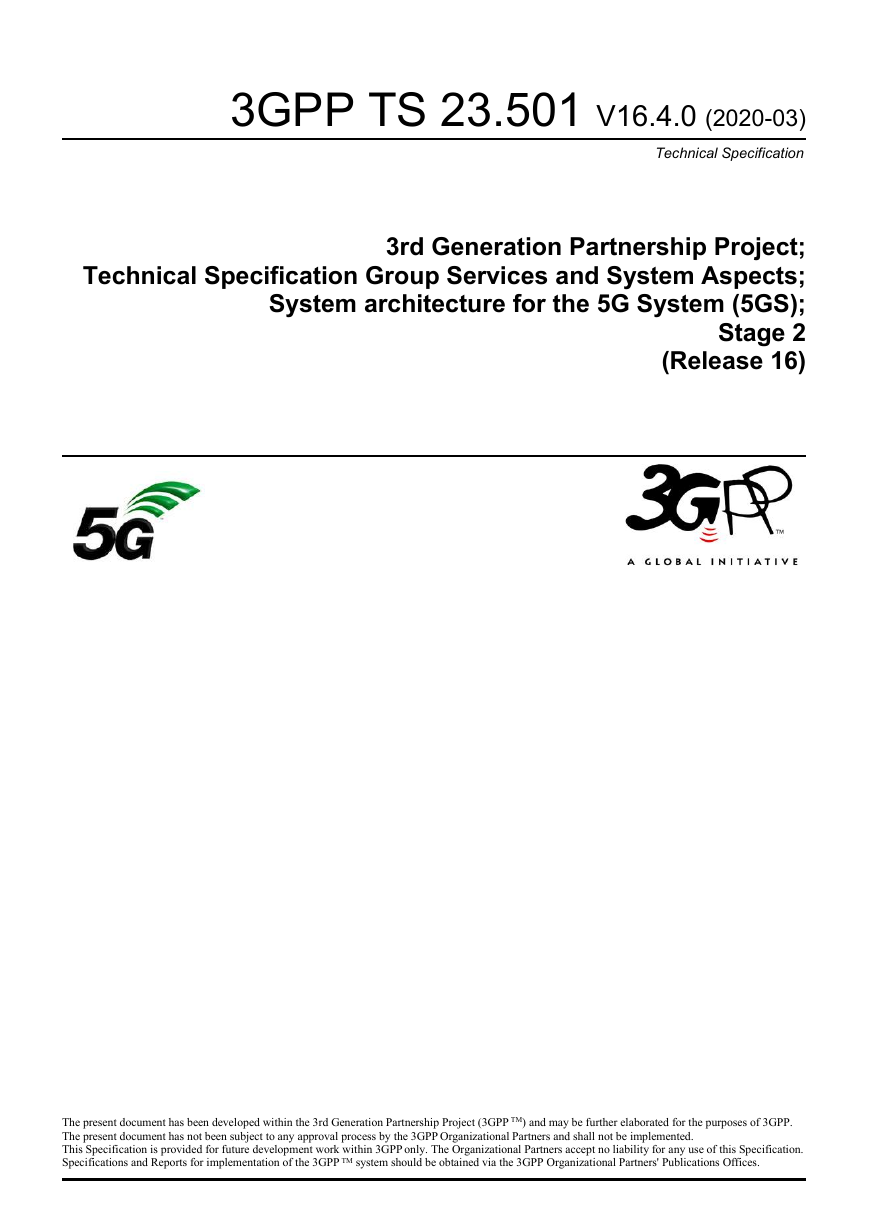
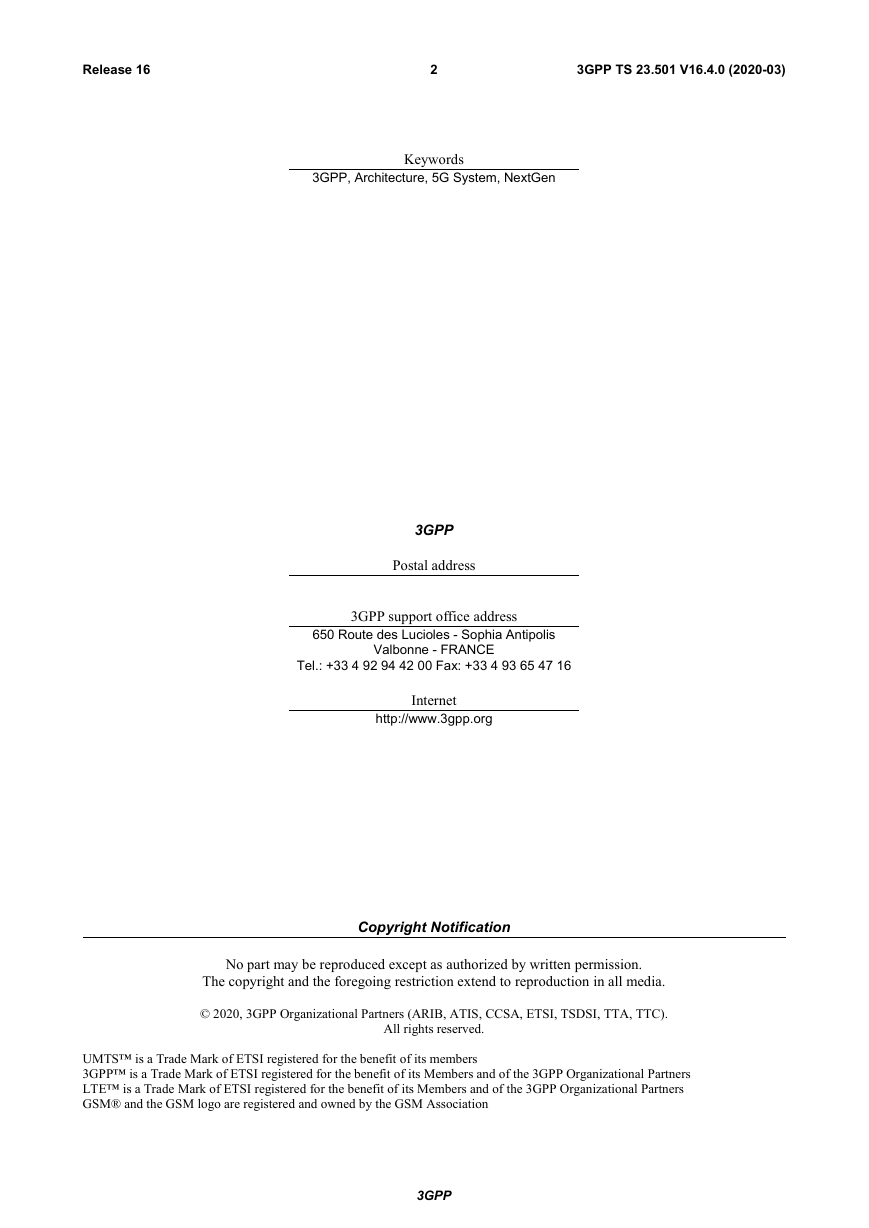

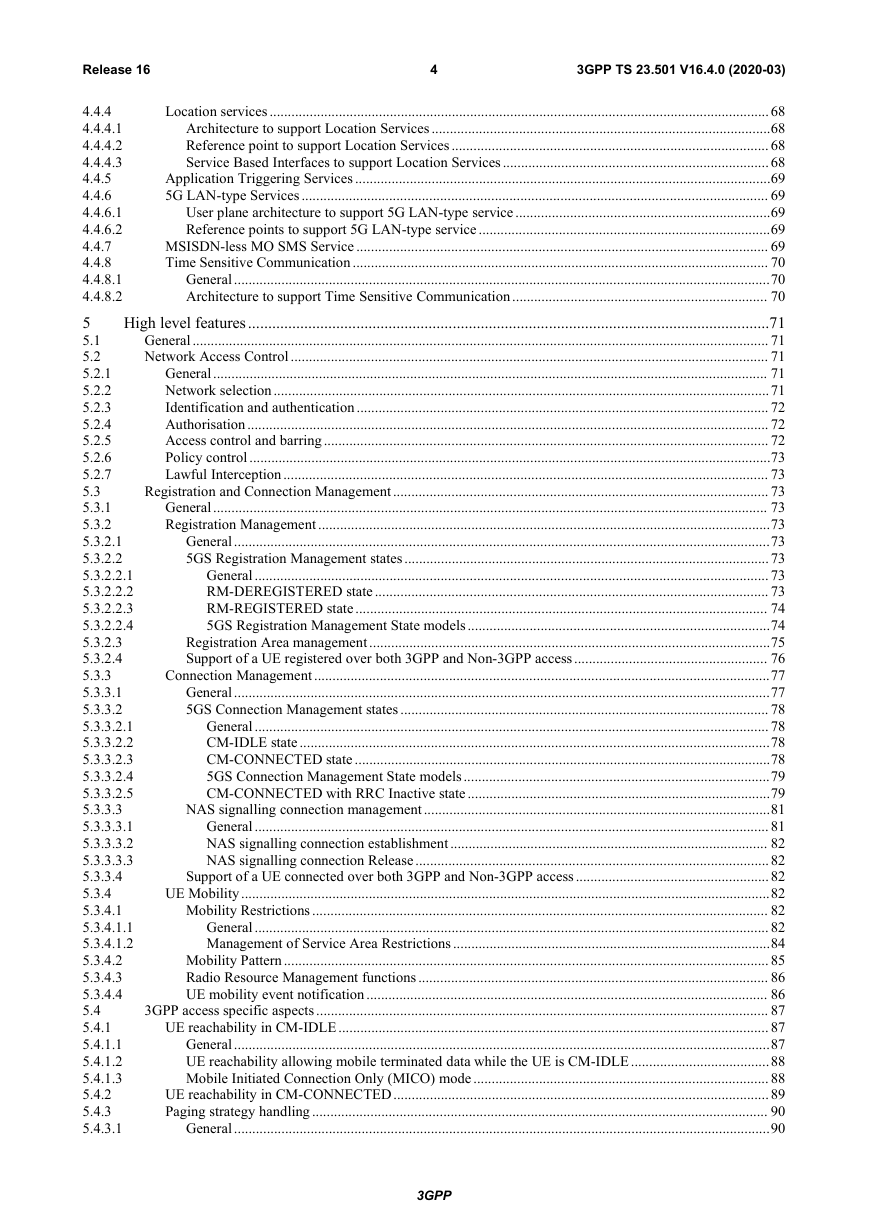
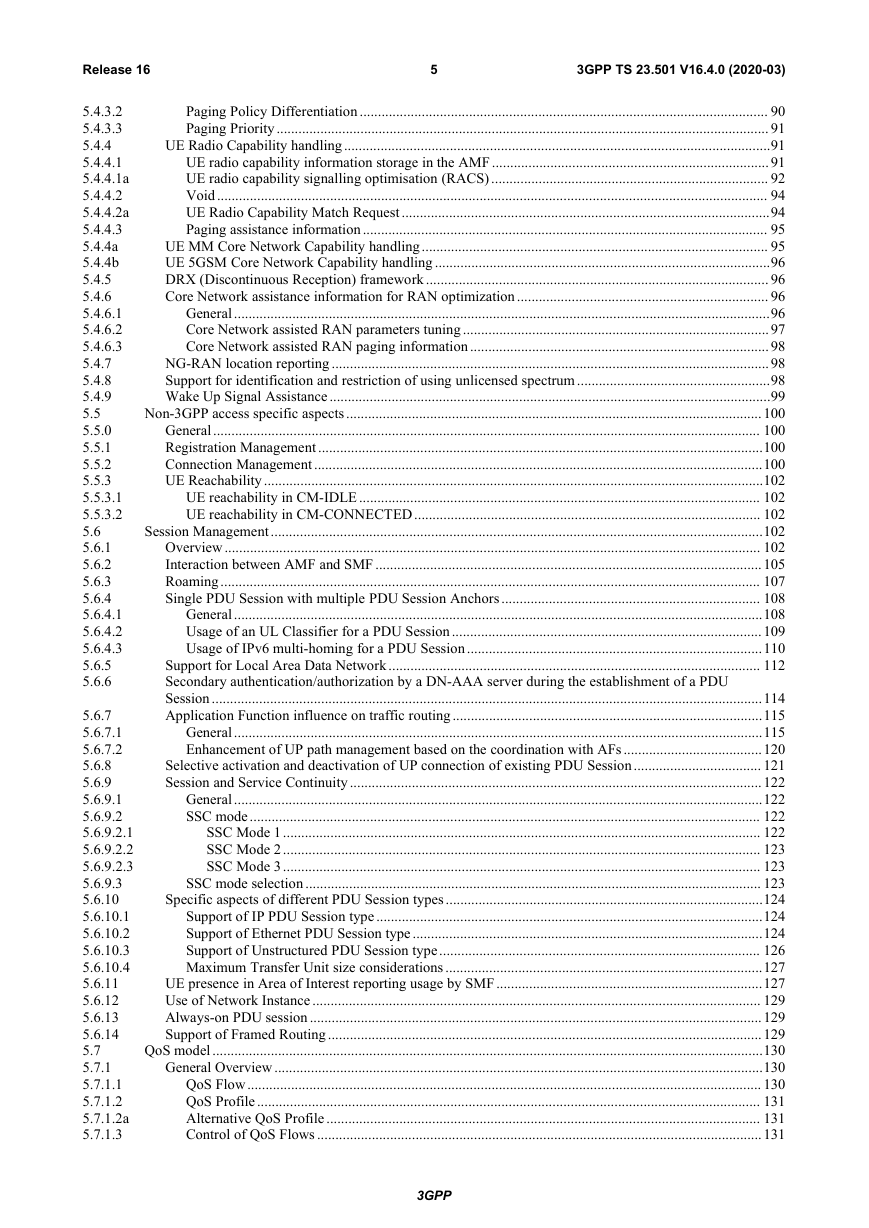
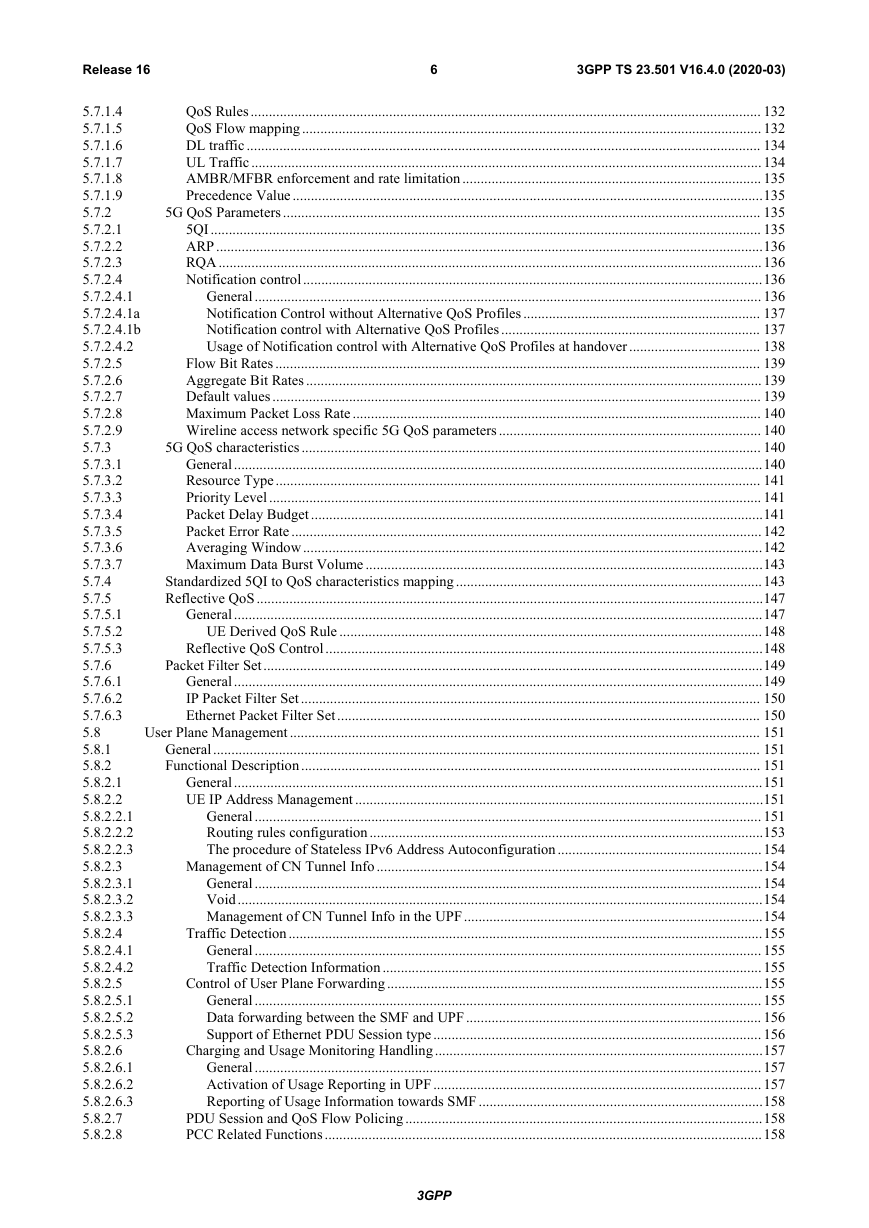

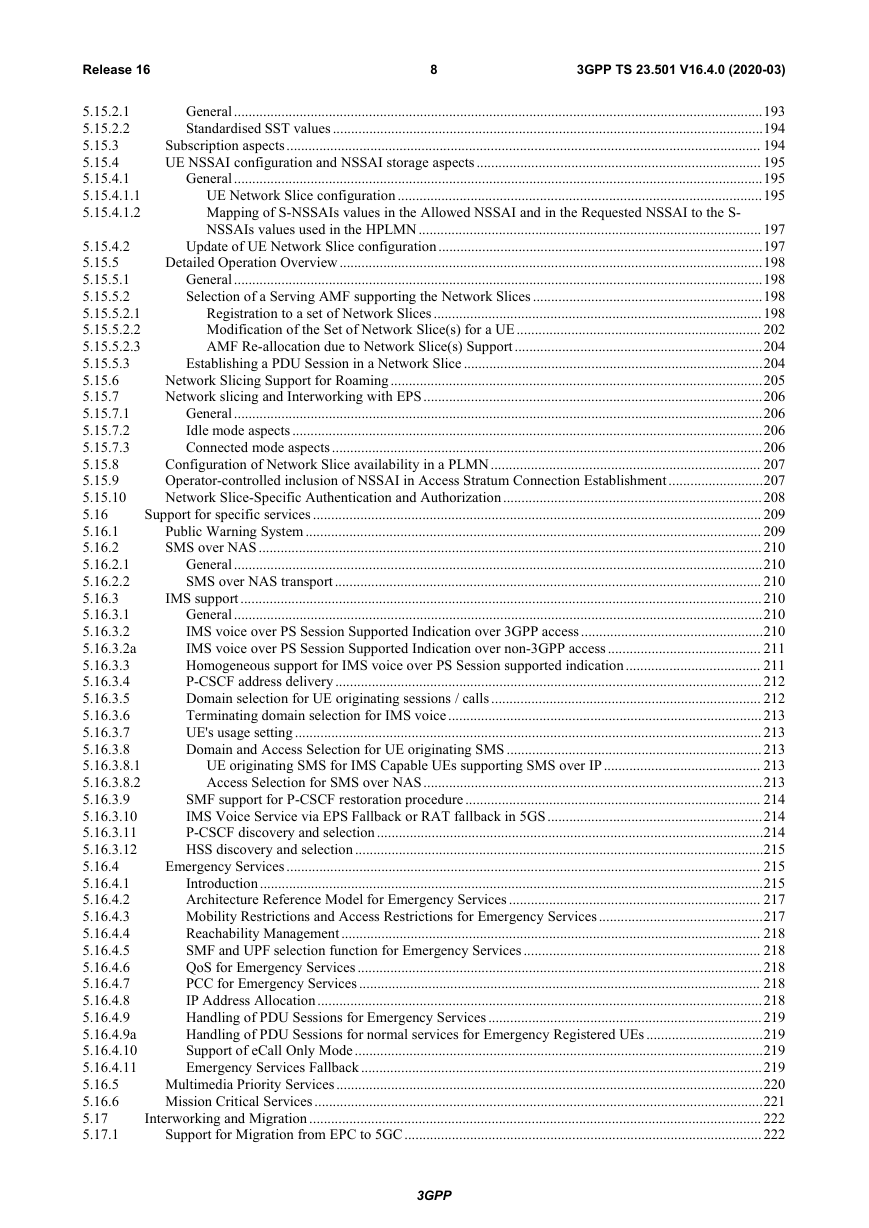








 2023年江西萍乡中考道德与法治真题及答案.doc
2023年江西萍乡中考道德与法治真题及答案.doc 2012年重庆南川中考生物真题及答案.doc
2012年重庆南川中考生物真题及答案.doc 2013年江西师范大学地理学综合及文艺理论基础考研真题.doc
2013年江西师范大学地理学综合及文艺理论基础考研真题.doc 2020年四川甘孜小升初语文真题及答案I卷.doc
2020年四川甘孜小升初语文真题及答案I卷.doc 2020年注册岩土工程师专业基础考试真题及答案.doc
2020年注册岩土工程师专业基础考试真题及答案.doc 2023-2024学年福建省厦门市九年级上学期数学月考试题及答案.doc
2023-2024学年福建省厦门市九年级上学期数学月考试题及答案.doc 2021-2022学年辽宁省沈阳市大东区九年级上学期语文期末试题及答案.doc
2021-2022学年辽宁省沈阳市大东区九年级上学期语文期末试题及答案.doc 2022-2023学年北京东城区初三第一学期物理期末试卷及答案.doc
2022-2023学年北京东城区初三第一学期物理期末试卷及答案.doc 2018上半年江西教师资格初中地理学科知识与教学能力真题及答案.doc
2018上半年江西教师资格初中地理学科知识与教学能力真题及答案.doc 2012年河北国家公务员申论考试真题及答案-省级.doc
2012年河北国家公务员申论考试真题及答案-省级.doc 2020-2021学年江苏省扬州市江都区邵樊片九年级上学期数学第一次质量检测试题及答案.doc
2020-2021学年江苏省扬州市江都区邵樊片九年级上学期数学第一次质量检测试题及答案.doc 2022下半年黑龙江教师资格证中学综合素质真题及答案.doc
2022下半年黑龙江教师资格证中学综合素质真题及答案.doc